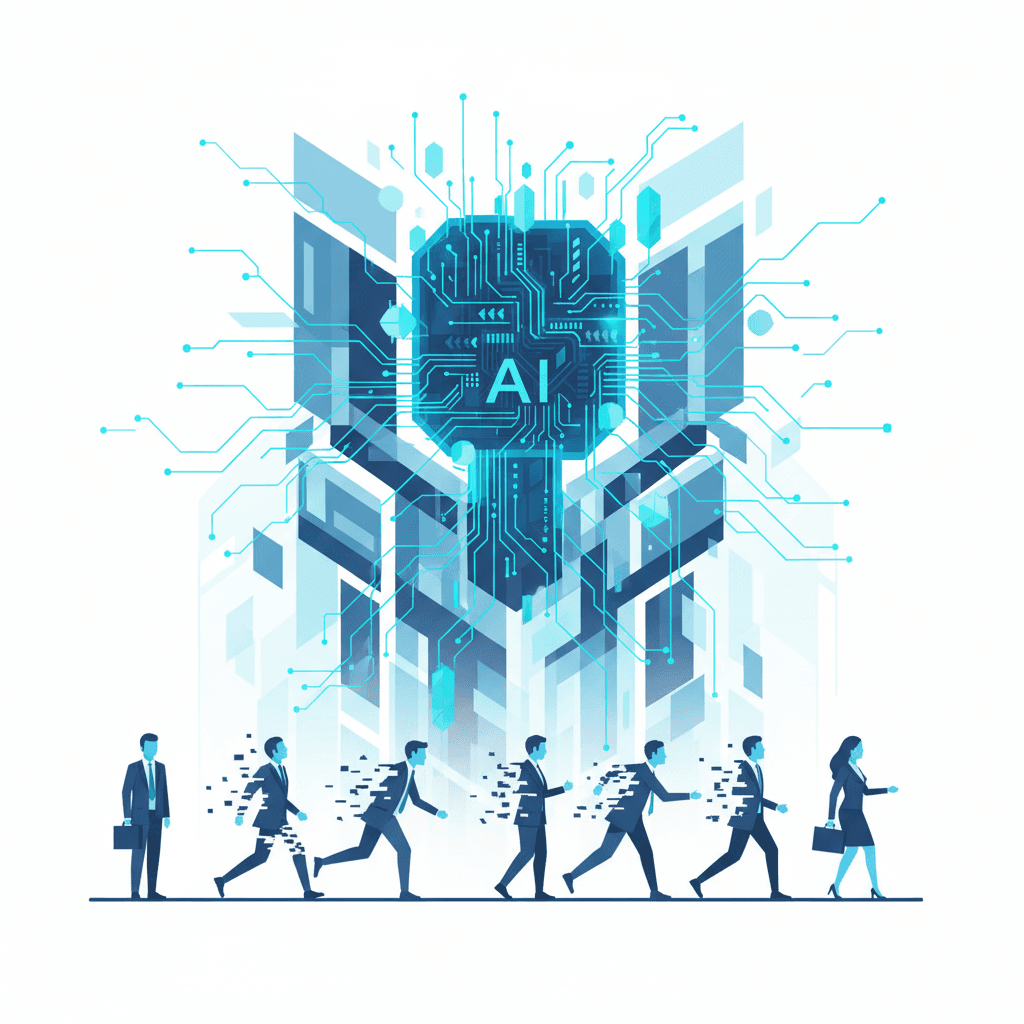AI Drives Amazon's 30,000 Corporate Layoffs, Reshaping Workforce
Thousands of corporate roles cut as Amazon pivots to AI, streamlines operations, and rectifies pandemic-era overstaffing.
October 28, 2025

Amazon is undertaking its most significant workforce reduction in years, with plans to eliminate as many as 30,000 corporate positions.[1][2] This sweeping series of job cuts is part of a broader strategy to curtail expenses and rectify overstaffing that occurred during the surge in demand driven by the pandemic.[3][4] The layoffs represent approximately 10% of the company's 350,000 corporate employees and stand as the largest job reduction initiative since the cuts that saw 27,000 roles eliminated in late 2022 and early 2023.[5][6][7] While the cuts are substantial within the corporate structure, they constitute a small fraction of Amazon's massive global workforce of over 1.5 million, which is predominantly composed of warehouse staff.[2][8] The move signals a significant operational shift under CEO Andy Jassy, who has been focused on streamlining the company and reducing bureaucracy since taking the helm.[2][9]
The workforce reduction will be felt across a wide array of the company's divisions.[10] Among the key areas expected to be impacted are human resources, known internally as People Experience and Technology (PXT), operations, devices and services, and the highly profitable Amazon Web Services (AWS) cloud computing division.[2][5][7] Some reports indicate that the PXT team could see a reduction of up to 15% of its staff.[8][11] These cuts follow a series of smaller, more targeted layoffs that have occurred over the past two years in various units, including communications and podcasting.[2][4] The current round of layoffs is far broader in its scope, affecting nearly every business unit from logistics and payments to video games.[1][12] This widespread restructuring is part of Jassy's initiative to make Amazon a more efficient organization by cutting unnecessary bureaucracy and accelerating decision-making processes.[2]
A primary driver behind this large-scale workforce reduction is the company's strategic pivot towards artificial intelligence and automation.[9][10] CEO Andy Jassy has publicly stated that the increasing use of AI will likely lead to a reduction in the corporate workforce over the next few years as repetitive tasks are automated.[3][12] The company is making substantial investments in AI, with plans to increase capital expenditures to over $100 billion in 2025, a significant portion of which is dedicated to building out AI capacity within AWS.[1][13] Analysts believe that the productivity gains from these AI tools have enabled the company to operate more efficiently with a smaller workforce.[2][9] This move is seen by some as a tipping point, shifting the company's reliance from human capital towards technological infrastructure.[3] Internal documents have also revealed long-term plans to automate a significant portion of warehouse operations, which could avoid the hiring of hundreds of thousands of workers over the next decade.[1]
The layoffs at Amazon are indicative of a larger trend within the technology industry, where numerous major companies have been reducing their headcounts.[14] Firms like Microsoft, Meta, and Google have also conducted significant layoffs, often citing the need to recalibrate after rapid pandemic-era expansion and to strategically reinvest in high-growth areas like artificial intelligence.[1][14][15] The tech sector has seen tens of thousands of job cuts in the past year, reflecting a collective effort to improve efficiency and align resources with the evolving demands of the market.[14][15] For Amazon, another contributing factor may be its strict return-to-office policy, which has not prompted as many voluntary resignations as some insiders may have anticipated.[2] The combination of post-pandemic business normalization, a strategic push towards AI-driven efficiency, and a desire for a leaner corporate structure has culminated in this historic round of job cuts.[15][9]
In conclusion, Amazon's decision to lay off up to 30,000 corporate employees is a multifaceted strategic maneuver reflecting both immediate cost-saving needs and a long-term vision heavily influenced by artificial intelligence. By reducing its workforce in key areas, including its pivotal AWS division, the company is adjusting to a post-pandemic reality while simultaneously freeing up resources to invest heavily in the AI technologies it believes will drive future growth and efficiency. This significant restructuring aligns with a broader industry-wide correction and underscores the transformative impact of AI on workforce management at major technology corporations. The move signals a clear strategic direction under CEO Andy Jassy, prioritizing a leaner, more technologically integrated corporate structure to navigate the future of e-commerce and cloud computing.